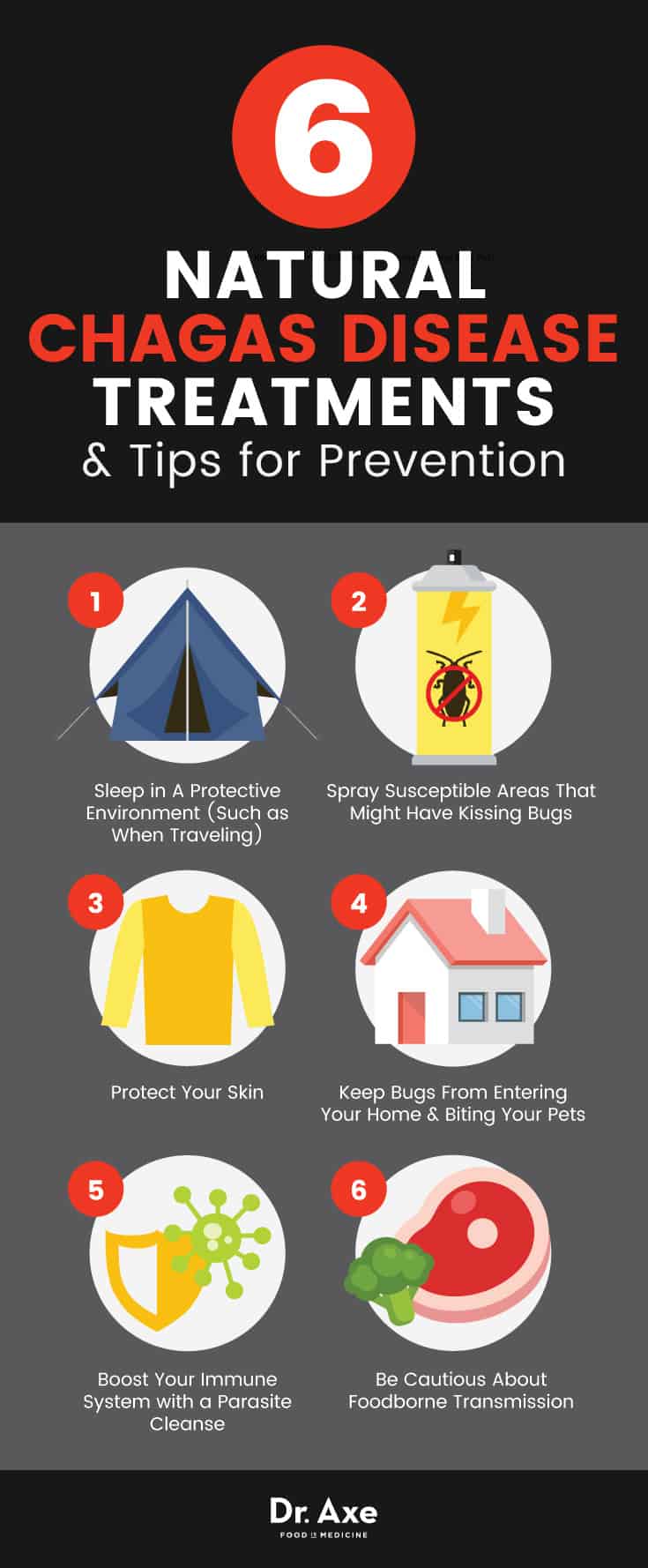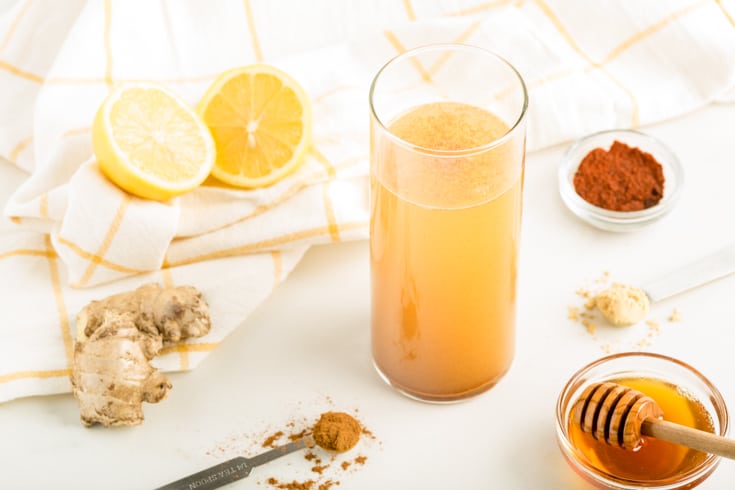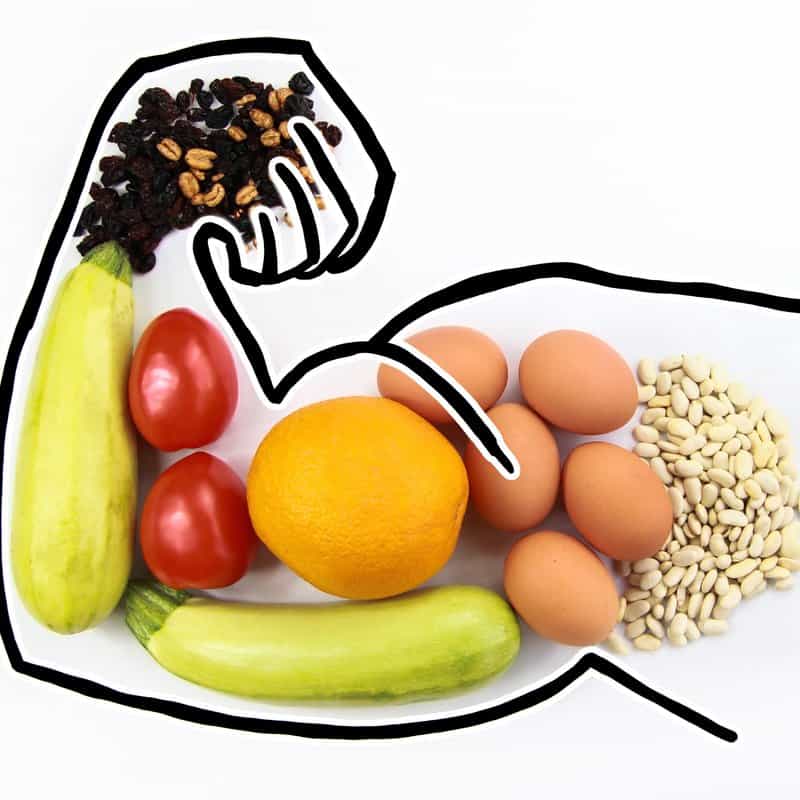This Dr. Axe content is medically reviewed or fact checked to ensure factually accurate information.
With strict editorial sourcing guidelines, we only link to academic research institutions, reputable media sites and, when research is available, medically peer-reviewed studies. Note that the numbers in parentheses (1, 2, etc.) are clickable links to these studies.
The information in our articles is NOT intended to replace a one-on-one relationship with a qualified health care professional and is not intended as medical advice.
This article is based on scientific evidence, written by experts and fact checked by our trained editorial staff. Note that the numbers in parentheses (1, 2, etc.) are clickable links to medically peer-reviewed studies.
Our team includes licensed nutritionists and dietitians, certified health education specialists, as well as certified strength and conditioning specialists, personal trainers and corrective exercise specialists. Our team aims to be not only thorough with its research, but also objective and unbiased.
The information in our articles is NOT intended to replace a one-on-one relationship with a qualified health care professional and is not intended as medical advice.
Kissing Bug Parasite: Chagas Disease Symptoms + 6 Natural Treatments
June 14, 2017
Within the United States, the Centers for Disease Control (CDC) considers Chagas disease one of five “neglected parasitic infections” (or NPIs). These are a group of parasitic diseases that experts feel require public health action and attention. Most people have never heard of NPIs and remain unaware of how to protect themselves against them. The CDC states that “These infections are considered neglected because relatively little attention has been devoted to their surveillance, prevention, and/or treatment. They include Chagas disease, cysticercosis, toxocariasis, toxoplasmosis, and trichomoniasis.” (1)
Chagas disease cases are not commonly reported within the U.S. According to August 2017 data, there are approximately 300,000 people in the United States with the disease. (2) The bugs that transmit the disease (nicknamed “kissing bugs”) have been found in certain states throughout the southern U.S. for decades, however. NPIs pose a more serious risk to people living in both rural and urban areas of Southern and Central America. They can also be a threat to travelers who make their way through these regions. Throughout Latin America Chagas disease affects a relatively high number of adults and children each year. In some cases it causes severe symptoms and complications.
How do you prevent Chagas disease? And is there a cure for Chagas disease once it develops? The good news is that the disease is preventable, and in most cases treatable too. (3) While there are currently no drugs or vaccines available that can fully prevent Chagas disease, experts recommend protecting yourself in several ways. As you’ll learn more about below, to prevent and treat Chagas disease you need to wear protective clothing to prevent insect bites; apply insect repellent to exposed skin; visit a doctor right away if you suspect a bite; and use antiparasitic medications when needed.
What Is Chagas Disease?
The parasite Trypanosoma cruzi causes Chagas disease. Chagas disease is an infection also called American Trypanosomiasis. The parasite passes to both animals and people in several ways. The most common way is due to an insect bite. Chagas disease is considered to be a vector-borne illness. “Insect vectors” are any types of bugs that spread illnesses (vector-borne diseases) by circulating parasites in the blood of the host. (4)
Several different species of Triatomine bugs, also called “kissing bugs,” can spread the parasite that causes Chagas disease infections. Kissing bugs earned their nickname because of how they tend to bite people’s faces, especially near the eyes and mouth. Once bitten, T. Cruzi parasites make their way to into the bloodstream or the organs of the host (the person/animal who has been bitten), causing damage and dysfunction that can sometimes be very serious.
Where is the parasite that causes Chagas disease found? Bugs that transmit Trypanosoma cruzi have been found across North, Central and South America. According to the CDC, T. cruzi most often causes infections in people living in or visiting rural areas of Latin America.
Experts estimate that up to eight million people living in Mexico, Central America, and South America — the areas where the infection occurs most often — currently have Chagas disease. In the U.S Chagas disease is not considered to be endemic. This means it’s not regularly found among people living in any certain area. For this reason, in the U.S. “control strategies” to reduce the spread of the disease are the main focus. These can include: preventing transmission from blood transfusions or organ transplants, educating the public on symptoms to look out for, and reducing mother-to-baby transmission of the disease.
Chagas Disease Symptoms
What are some signs and symptoms of the “kissing bug disease”? According to experts in parasitic infections, once someone is infected with Chagas disease their symptoms tend to occur in two phases. First there is the the acute phase (short term, for the first several weeks to months). Then the chronic phase, which is long term, including for many years or even decades in some cases.
Some people experience no symptoms at all during either phase of Chagas disease. Others develop a serious infection right away. Children and those with weakened immune systems are at a higher risk for complications due to Chagas disease.
The most common Chagas disease symptoms include:
- Symptoms of a fever including high body temperature, shakes, fatigue, and body or muscle aches
- Headaches
- Skin rash or redness and inflammation. Swelling might occur on the skin where the parasite entered the body, commonly on the face or nears the eyes. “Romaña’s sign” is the term that describes swelling of the eyelids or side of the face where the bug bite happened.
- Digestive issues such as loss of appetite, diarrhea, and vomiting
- Sometimes the vital organs can become swollen or enlarged. The liver, glands or spleen can become inflamed and painful in some cases.
- Complications, especially in some young children, can include inflammation of the heart (myocarditis) or brain (meningoencephalitis), which rarely becomes deadly (less than 5 percent of the time).
- People who experience chronic untreated Chagas disease infections have about a 30 percent chance of developing serious complications at some time. These can include: an enlarged heart (cardiomyopathy), heart failure or cardiac arrest, altered heart rate or rhythms, enlarged esophagus (megaesophagus), or enlarged colon (megacolon).
- It’s also possible to have an allergic reaction due to a bite. Symptoms can then include severe redness of the skin, swelling, pain, itching, welts, hives or, rarely, anaphylactic shock.
Causes & Risk Factors for Chagas Disease
As mentioned above, the most common cause of Chagas disease is through vector-borne (insect bite) transmission. Triatomine bug/kissing bugs are about one-inch long, black and red-spotted bugs that suck blood.
Kissing bugs become infected with the parasite by first biting an infected animal or person. Then, as they move on to biting another person or animal (the host), they transmit the parasite either through the bite itself or by leaving behind a small amount of their feces on the host’s skin, which contains the parasite. The parasite then enters the host’s body through a cut in the skin or through mucous membranes. From here it makes its way into the bloodstream. Bites typically happen at night, often when someone is sleeping. They usually occur near the eyes or mouth.
Other than vectorborne transmission, Chagas disease can transmit in several other ways. While the risk of transmission is believed to be very low, some of the other possible causes of transmission include:
- From a pregnant woman to her baby
- Through a blood transfusion
- Through organ transplantation
- From consuming contaminated food or water. It’s possible for bugs carrying the parasite to make their way into food or water. Or they may leave behind feces that is carrying the parasite.
Risk factors for developing chagas disease include:
- Living in or visiting areas where poverty is widespread, especially parts of rural Latin America.
- Living in a home where kissing bugs are found more often. This includes those made from materials like mud, adobe, straw, and palm thatch. Kissing bugs most often reside in tiny spaces around and in poorly structured dwellings. For example, they might be underneath porches, between rocks, under cement or patios, around or inside stored bark and wood, inside dog houses or chicken coups, and around other farming structures. (5)
- For a baby or young child, being breastfed if the mother has an active infection. (6)
- Eating contaminated food or drinking contaminated water.
- Receiving a recent blood transfusion, organ transplant, or another type of procedure done with a contaminated needle.

Conventional Chagas Disease Treatment
How do you treat Chagas disease? Once a doctor makes a diagnosis, they use two different approaches, or sometimes both together, in order to help protect the patient from further Chagas disease complications. These include prescribing antiparasitic treatments, which help to kill the parasite inside the body. Doctors may also use a number of other medical treatments to reduce symptoms and keep the infection from worsening.
-
- Antiparasitic Medications and Treatments — Visit your doctor as soon as possible if you suspect you a kissing bug has bitten you. Your doctor can prescribe medication to control the infection. Early intervention is important, since the earlier you receive the treatment, the better chance it has of working well. Most people are able to overcome the infection with proper care. They do not need to be hospitalized during treatment for complications, unless the infection becomes serious or life-threatening. The biggest risk is associated with chronic Chagas disease, which remains untreated for many years, since this can cause inflammation of the heart, intestines and other vital organs.
-
- Benznidazole — In 2017, the U.S. Food and Drug Administration granted approval for the use of benznidazole in children aged 2 to 12 years old with Chagas disease. This is the first treatment approved in the United States for Chagas disease. The first trial for this medicine yielded negative results from 60 percent of children who initially had positive results. The second trial yielded negative results from 55 percent of children who received benznidazole, compared with 5 percent who received a placebo.
Typical adverse reactions to benznidazole are stomach pains, nausea, vomiting, rashes, decreased weight, abnormal white blood cell counts, hives, itching and decreased appetite. Serious risks include nervous system effects, bone marrow depression, serious skin reactions and could trigger fetal harm in pregnant women. (2)
- Controlling Symptoms and Complications — Chagas disease cans sometimes cause digestive problems including intestinal infection, pain and malabsorption due to inflammation. Cardiac issues are also possible depending on how severe the infection becomes. Your doctor will decide if any other medications are necessary to help you heal better while recovering, especially if you have any existing type of disease that can cause the infection to become life-threatening (such as heart disease).
- Benznidazole — In 2017, the U.S. Food and Drug Administration granted approval for the use of benznidazole in children aged 2 to 12 years old with Chagas disease. This is the first treatment approved in the United States for Chagas disease. The first trial for this medicine yielded negative results from 60 percent of children who initially had positive results. The second trial yielded negative results from 55 percent of children who received benznidazole, compared with 5 percent who received a placebo.
6 Natural Chagas Disease Treatments & Tips for Prevention
1. Sleep in a Protective Environment (Such as When Traveling)
Kissing bugs tend to live in weak-structured buildings made from natural materials like mud, straw and palm. At night they come out of “hiding spots” between crevices where they hide out in order to feed. To lower your risk of being bitten by a parasitic bug, including a kissing bug, sleep indoors in a well-constructed building or facility, such as a hotel or house. If you’re camping outdoors or spending time outside at night in a high-risk area (such as when traveling to South America), then sleep in a well-constructed, sealed tent. Use screens or mesh covers if possible and cover your bare skin as much as you can.
2. Spray Susceptible Areas That Might Have Kissing Bugs
Authorities in certain areas, such as the Pan American Health Organization, are now working to prevent cases of Chagas disease infection by using strong bug repellent sprays and insecticides to kill off populations of kissing bugs. (7) You can use bug repellents on your bed, in your home and around a high-risk dwelling to limit the number of bugs that reside there. Burning or diffusing certain essential oils, such as citronella oil, may keep some bugs from making their way into your home. You can also consider contacting a professional pest control company if you suspect there are kissing bugs in your area or around your home.
3. Protect Your Skin
Experts recommend wearing protective clothing when you spend time outside (especially at night) in an area that has kissing bugs. Covering up exposed skin and applying bug spray or insect repellent can deter the bugs from approaching you.
4. Keep Bugs From Entering Your Home & Biting Your Pets
The CDC recommends taking precaution against kissing bugs entering your home by doing some of the following:
-
-
- Avoiding keeping piles of wood (such as firewood or old tree stumps) near your home
- Fixing or sealing cracks in windows, walls, roofs and doors
- Fixing any openings in screens, or replacing the screens on doors and windows
- If you live in a high risk area, having a professional treat susceptible areas like your attic or below your porch or deck
- Keeping your pets (such as dogs or cats that can get parasites too) inside to sleep at night, since they can be bitten and then potentially transmit the disease
- Checking your pet’s skin to make sure they don’t carry any bugs inside on their fur, toys, etc.
-
5. Boost Your Immune System with a Parasite Cleanse
Cleaning up your diet in an effort to “detoxify” your system will likely not solve an infection on its own. But it can help you to feel better. And it can help you overcome your infection more easily with help from medications or other treatments. You can follow a parasite cleansing diet on your own by doing some of the following for several weeks:
-
-
- Take black walnut supplements (about 250 milligrams 3x daily) to reduce symptoms of intestinal infection.
- Try wormwood (about 200 milligrams taken 3x daily) which is known for its anti-parasitic properties.
- Use oregano essential oil or take supplements (500 milligrams taken 4x daily) which contains natural antibacterial and anti-parasitic compounds. Clove oil is similar to oregano oil in that it can help kill harmful organisms and reduce symptoms of digestive upset and infection.
- Increase your intake of cleansing foods such as: fresh herbs or spices like ginger and turmeric, anise/fennel, lemon juice, aloe vera, raw honey and raw garlic.
-
6. Be Cautious about Foodborne Transmission
While it only happens very rarely, sometimes a Chagas disease infection can occur due to drinking contaminated water or eating contaminated foods. This is especially true in regions of South America where infections are more common. People have reported a number of cases of foodborne Chagas disease after eating foods including sugar cane, fruit juice, palm berry, acai berry and possibly undercooked meat. (8, 9) It’s believed that parasite contamination happens when triatomine bugs leave behind tiny amounts of feces on fruit or are crushed during food processing. To limit your risk of acquiring any type of parasite while traveling, follow these tips to stay on the safe side:
-
-
- Look for any unusual signs or symptoms after returning from a trip abroad if you’ve been eating the foods mentioned above. Be sure to tell your doctor.
- Don’t eat undercooked or raw meat, especially when visiting another country.
- Limit your intake of raw fruits, juices or veggies when visiting a high-risk area.
- Don’t drink any untreated, unfiltered water that may be contaminated. For example, don’t drink water from streams or lakes.
- Cook your food to help reduce the presence of any pathogens.
-
Precautions When Treating Chagas Disease
Overall, Chagas disease is rare in the United States. So don’t panic if you’ve spotted or been bitten by a bug that is causing irritation. Two bugs that resemble kissings bugs include wheel bugs and western corsairs, both of which are mostly harmless. Visit your doctor right away if you spot a kissing bug nearby and suspect that a bite has occurred. This is especially important if you’re a high-risk patient. For example, see a doctor if you’re pregnant, breastfeeding or have a history of a immune problem or heart disease.
Final Thoughts on Chagas Disease Symptoms & Treatments
-
-
- Chagas disease is a type of parasitic infection most often caused by a bug bite. The bugs that transmit the disease, called Triatomine bugs, are nicknamed “kissing bugs” due to how they bite their victim’s faces.
- Chagas disease happens most often in Central and South America. It can also affect people living in the U.S. and other parts of North America (most often states in the Southern U.S).
- Symptoms of Chagas disease include a skin rash, digestive problems, fatigue and a fever.
- To prevent and treat Chagas disease, be sure to protect your home, cover your skin, keep pets indoors to prevent them from being bitten and use bug sprays. Use antiparasitic medications when needed.
-








